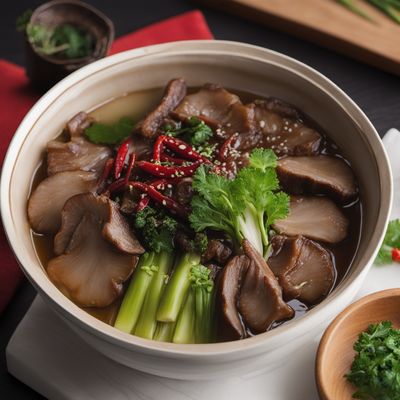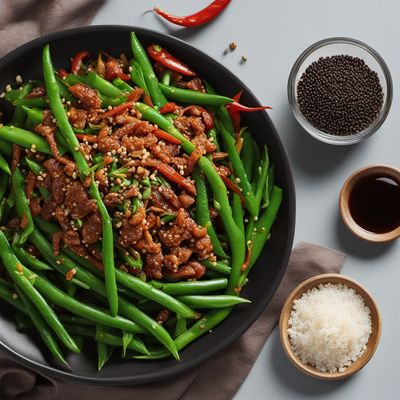
Recipe
Korean-style Jjim Nimono (Steamed Braised Vegetables)
Savory and Tender Korean-style Steamed Braised Vegetables
4.5 out of 5
This recipe brings a Korean twist to the traditional Japanese dish Nimono. Jjim Nimono features a medley of vegetables, gently steamed and braised in a flavorful Korean-inspired sauce. It is a delightful and healthy dish that showcases the harmonious blend of Korean and Japanese culinary traditions.
Metadata
Preparation time
15 minutes
Cooking time
20 minutes
Total time
35 minutes
Yields
4 servings
Preparation difficulty
Easy
Suitable for
Vegetarian, Vegan, Gluten-free, Dairy-free, Nut-free
Allergens
Soy
Not suitable for
Paleo, Keto, Low-carb, High-protein, High-fat
Ingredients
In this Korean adaptation of Nimono, we incorporate Korean flavors and spices to create a unique twist. The original Japanese Nimono typically uses soy sauce, mirin, and dashi as the base for the braising liquid. However, in Jjim Nimono, we replace the dashi with a combination of Korean soy sauce, gochujang (Korean chili paste), and sesame oil. This gives the dish a slightly spicy and nutty flavor profile, characteristic of Korean cuisine. We alse have the original recipe for Nimono, so you can check it out.
-
2 cups (470ml) water 2 cups (470ml) water
-
2 tablespoons Korean soy sauce 2 tablespoons Korean soy sauce
-
1 tablespoon gochujang (Korean chili paste) 1 tablespoon gochujang (Korean chili paste)
-
1 tablespoon sesame oil 1 tablespoon sesame oil
-
1 tablespoon sugar 1 tablespoon sugar
-
1 teaspoon minced garlic 1 teaspoon minced garlic
-
1 teaspoon grated ginger 1 teaspoon grated ginger
-
1 carrot, sliced into thin rounds 1 carrot, sliced into thin rounds
-
1 daikon radish, peeled and sliced into thin rounds 1 daikon radish, peeled and sliced into thin rounds
-
8 shiitake mushrooms, stems removed 8 shiitake mushrooms, stems removed
-
1 zucchini, sliced into thin rounds 1 zucchini, sliced into thin rounds
-
1 green onion, chopped 1 green onion, chopped
-
Sesame seeds, for garnish Sesame seeds, for garnish
Nutrition
- Calories (kcal / KJ): 120 kcal / 502 KJ
- Fat (total, saturated): 4g, 0.5g
- Carbohydrates (total, sugars): 18g, 8g
- Protein: 4g
- Fiber: 4g
- Salt: 1.5g
Preparation
-
1.In a large pot, combine water, Korean soy sauce, gochujang, sesame oil, sugar, minced garlic, and grated ginger. Stir well to combine.
-
2.Add the carrot, daikon radish, shiitake mushrooms, and zucchini to the pot. Bring the liquid to a boil over medium heat.
-
3.Reduce the heat to low, cover the pot, and let the vegetables simmer for 15-20 minutes, or until they are tender.
-
4.Once the vegetables are cooked, remove the pot from heat and garnish with chopped green onions and sesame seeds.
-
5.Serve the Jjim Nimono hot as a side dish or as a main course with steamed rice.
Treat your ingredients with care...
- Shiitake mushrooms — Soak dried shiitake mushrooms in warm water for 20 minutes before using. Remove the stems before slicing.
- Gochujang — Adjust the amount of gochujang according to your spice preference. Add more for a spicier dish or reduce for a milder flavor.
Tips & Tricks
- For a heartier version, you can add tofu or seitan to the dish.
- Feel free to experiment with different vegetables based on your preference and seasonal availability.
- Serve Jjim Nimono with a side of steamed rice to complete the meal.
- Leftovers can be stored in an airtight container in the refrigerator for up to 3 days.
- Garnish with additional sesame seeds and chopped green onions for added flavor and visual appeal.
Serving advice
Serve Jjim Nimono as a side dish alongside other Korean dishes, such as Bibimbap or Japchae. It can also be enjoyed as a main course with steamed rice and a side of kimchi.
Presentation advice
Arrange the colorful steamed vegetables on a platter and sprinkle with sesame seeds and chopped green onions for an attractive presentation. Serve with a bowl of steamed rice on the side to complete the meal.
More recipes...
For Japanese cuisine » Browse all
More Japanese cuisine dishes » Browse all

Tai-meshi
Sea Bream Rice
Tai-meshi is a traditional Japanese dish that is made with sea bream and rice. It is a delicious and healthy dish that is perfect for a special...

Negitorodon
Negitorodon is a traditional Japanese dish that consists of raw tuna and green onions served over a bed of rice.

Nankotsu yakitori
Chicken cartilage skewers
Nankotsu yakitori is a Japanese dish made with grilled chicken cartilage.
More Korean cuisine dishes » Browse all
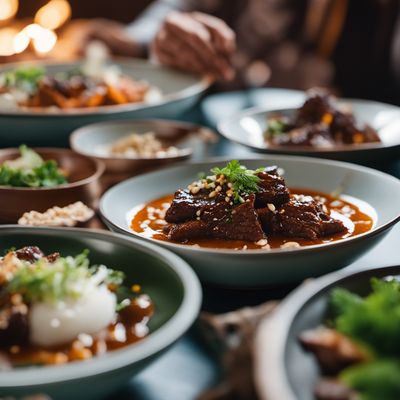
Galbijjim
Galbijjim is a Korean dish that is made by braising beef short ribs in a sweet and savory sauce. It is a popular dish that is often served at...
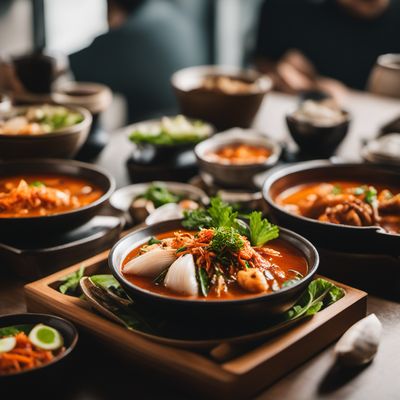
Maeuntang
Maeuntang is a spicy Korean fish stew that is typically made with a variety of seafood and vegetables. It is a popular dish in Korea and is often...
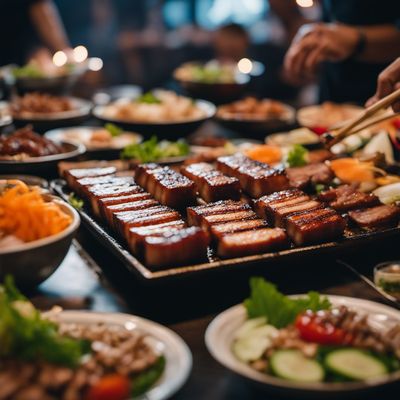
Samgyeopsal
Grilled Pork Belly
Samgyeopsal is a traditional Korean dish that consists of grilled pork belly slices served with various condiments.






